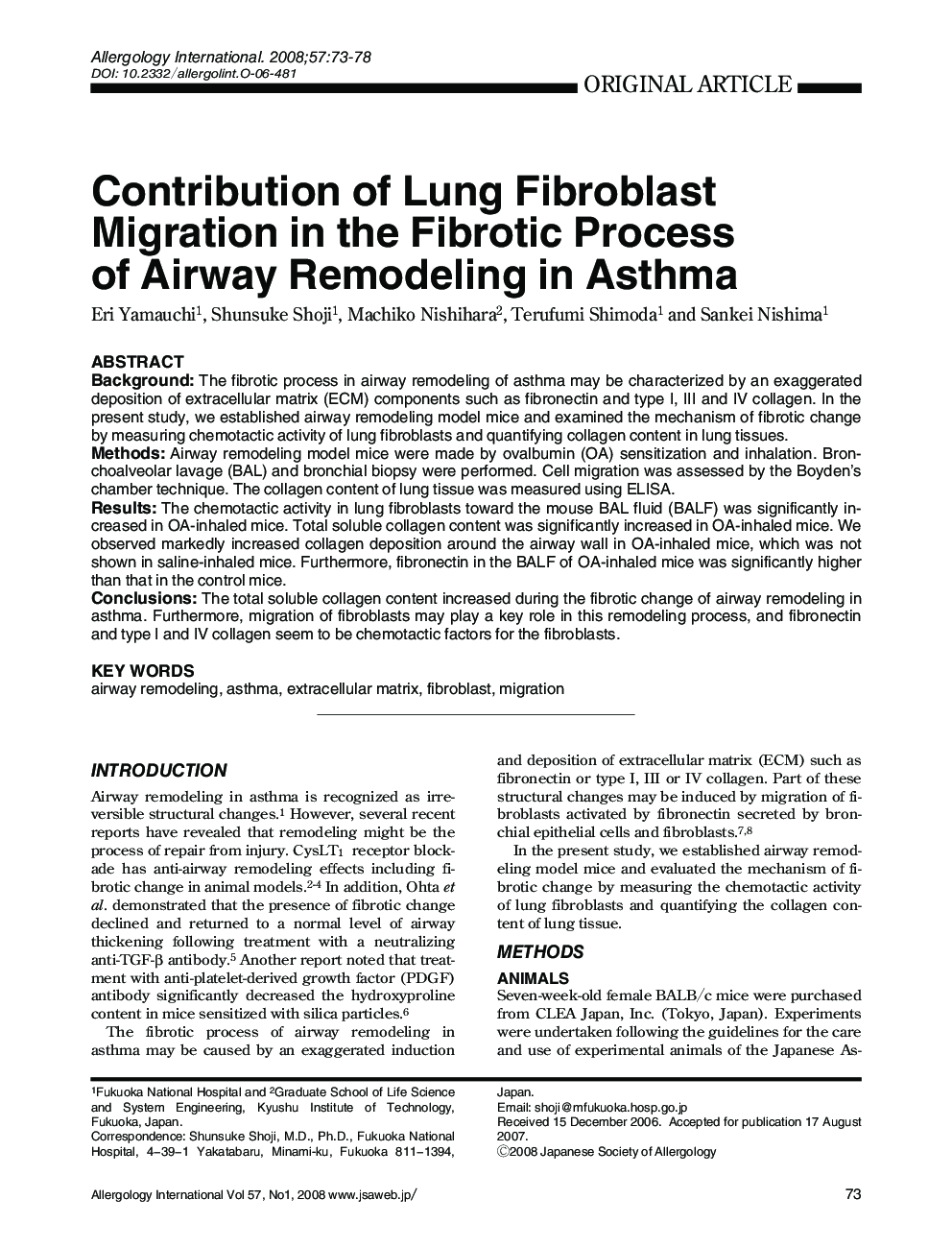| Article ID | Journal | Published Year | Pages | File Type |
|---|---|---|---|---|
| 3341134 | Allergology International | 2008 | 6 Pages |
ABSTRACTBackgroundThe fibrotic process in airway remodeling of asthma may be characterized by an exaggerated deposition of extracellular matrix (ECM) components such as fibronectin and type I, III and IV collagen. In the present study, we established airway remodeling model mice and examined the mechanism of fibrotic change by measuring chemotactic activity of lung fibroblasts and quantifying collagen content in lung tissues.MethodsAirway remodeling model mice were made by ovalbumin (OA) sensitization and inhalation. Bronchoalveolar lavage (BAL) and bronchial biopsy were performed. Cell migration was assessed by the Boyden's chamber technique. The collagen content of lung tissue was measured using ELISA.ResultsThe chemotactic activity in lung fibroblasts toward the mouse BAL fluid (BALF) was significantly increased in OA-inhaled mice. Total soluble collagen content was significantly increased in OA-inhaled mice. We observed markedly increased collagen deposition around the airway wall in OA-inhaled mice, which was not shown in saline-inhaled mice. Furthermore, fibronectin in the BALF of OA-inhaled mice was significantly higher than that in the control mice.ConclusionsThe total soluble collagen content increased during the fibrotic change of airway remodeling in asthma. Furthermore, migration of fibroblasts may play a key role in this remodeling process, and fibronectin and type I and IV collagen seem to be chemotactic factors for the fibroblasts.
